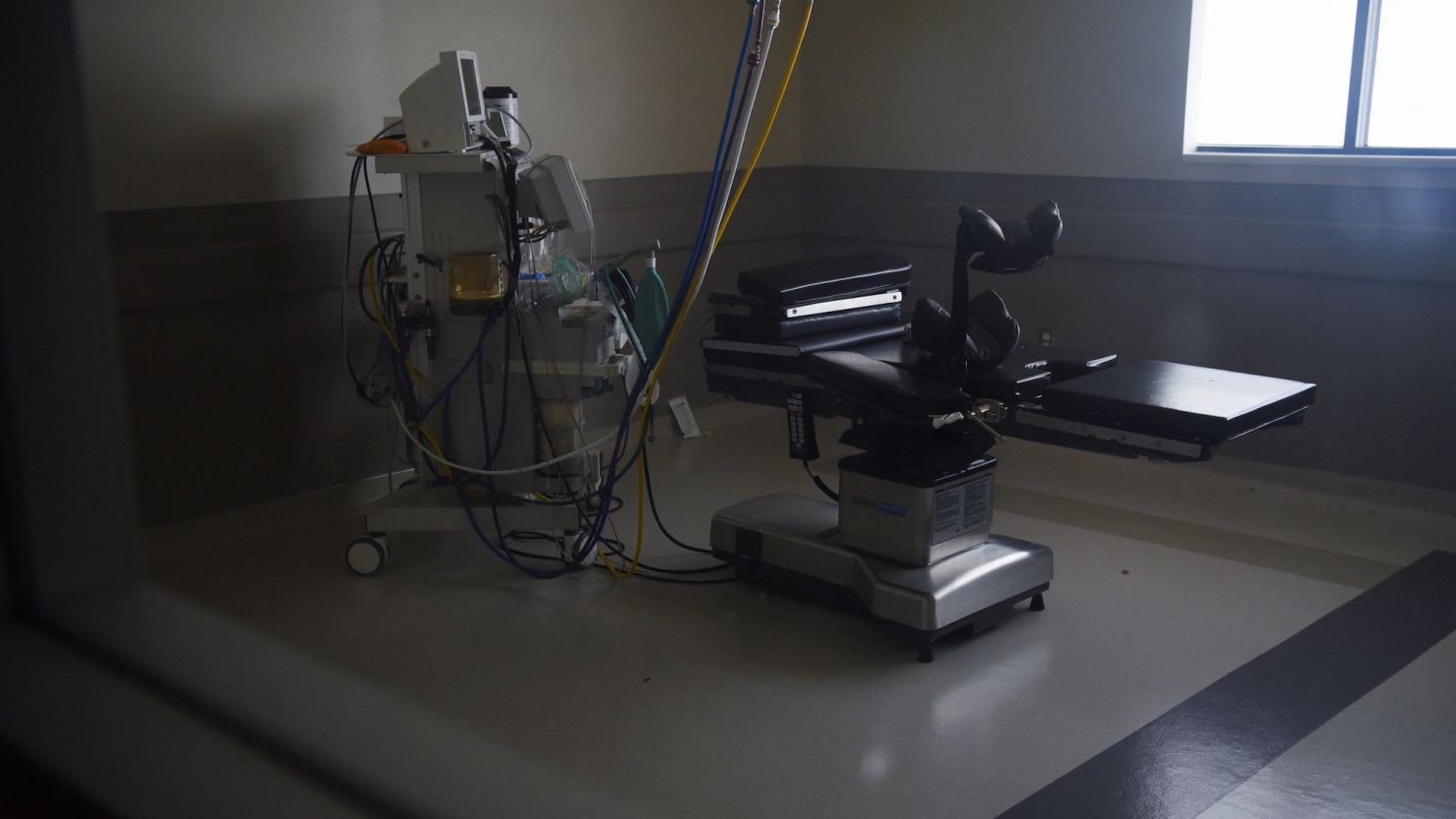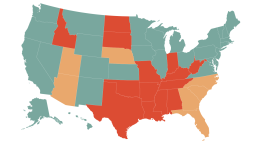In the year following the Supreme Court Dobbs decision, the abortion landscape in the United States became more fractured than ever.
Abortions increased nationwide, according to a new report from #WeCount, a research project led by the Society of Family Planning — the average monthly change in the 12 months post-Dobbs compared to the two months pre-Dobbs adds up to about 2,200 more abortions over the course of a year.
But the trends diverged sharply based on state policy, with abortions all but stopped in states with bans and significant increases in many states where abortion remained legal.
There were about 115,000 fewer abortions in the 17 states with total or six-week bans in effect, plummeting 98% in banned states and dropping 40% in those with 6-week gestational limits, according to the new report. About a third of the overall decline can be attributed to Texas.
The remaining 33 states where abortion remained legal, along with the District of Columbia, recorded nearly 117,000 more abortions — a 14% increase year-over-year.
“This is a sign of increasing inequality of access,” said Caitlin Myers, a ?professor of economics at Middlebury College. Her research has focused on abortion trends, but she was not involved in the new analysis.
“Whether somebody who wants to access abortion can actually do so depends more than ever on where they live,” she said.
The #WeCount analysis tracks both procedural and medication abortions through data reported by providers, but it does not account for self-managed abortions such as those received through Aid Access that are not obtained within the formal US health care system.
Much of the increase in states where abortion remains legal were among patients who traveled from states with bans or restrictions, experts say. The new report doesn’t capture how widespread the need to travel for an abortion has become, but local data suggests a clear trend.
There were 21,500 more abortions in Illinois in the year after the Dobbs decision, more than any other state, according to the new report. Nearly a quarter of patients that went to Planned Parenthood Illinois traveled from another state in that time, according to the organization – up from 7% before the Supreme Court decision. And Planned Parenthood of the Rocky Mountains says that 90% of the increase they’ve seen has been among out-of-state patients.
Providers in Florida reported the third most abortions overall and the second largest increase, according to the new report. And more than 5,000 people have traveled from out-of-state to receive an abortion in Florida so far this year, according to data from the state health department — already more than in all of 2021.
Abortion in the conservative state is currently legal but in limbo as the state’s Supreme Court weighs a challenge to restrict it. The situation there highlights the massive consequences that ongoing uncertainty threatens, experts say.
“Florida going dark would reverberate through the South and dramatically increase driving distances,” Myers said. Displaced patients from within the state and others who relied on the clinics there would likely head north for care, and the flood of patients could create congestion in places like North Carolina or even Virginia, she said.
Earlier research has shown that travel is a significant barrier. And even if additional resources help reduce the burden on patients, it shouldn’t be the gauge of success, experts say.
“It’s really not a public health triumph that people have to mobilize the financial and social resources to travel, sometimes hundreds of miles away from their home, to obtain basic health care,” said Dr. Alison Norris, co-chair of #WeCount and association professor at The Ohio State University’s College of Public Health. “That’s really a public health crisis.”
And there is no measure of how many are falling through the cracks.
About 30% of patients don’t show up for the appointments they make for their abortion care, said Adrienne Mansanares, president and CEO of Planned Parenthood of the Rocky Mountains. But when matched with Patient Navigators — staff dedicated to helping individuals with one-on-one support for their abortion, including finding financial assistance, counseling, logistical guidance and more — the share of missed appointments drops to 2%.
“They were all near-misses. Any one of those details could cause a person to miss (their appointment),” Mansanares said. Access to abortion care is so critical that patients will do whatever it takes to make the appointment as long as they have the resources, she said.
Work to reduce barriers and better protect access in states where abortion remains legal has helped create new opportunities for care that didn’t exist before, expert say.
Get CNN Health's weekly newsletter
- Sign up here to get The Results Are In with Dr. Sanjay Gupta every Tuesday from the CNN Health team.
“Some of these increases are the result of meeting an unmet need, and that’s valuable,” Norris said. Expanded telehealth options, investment in expanding clinics and additional financial resources for patients are among the influx of resources that have helped meet some of the unmet need, she said.
“Still, thousands of people can’t get care in the state where they live. Period. And there’s no reason to assume that the increases in some states are due to everybody who needs an abortion being able to travel for one.”
And for a variety of reasons, there’s looming concern about how permanent some of those valuable resources will be, Norris said.
An increasing share of abortions are provided by virtual-only telehealth providers, according to the new report — up from an average of about 4,000 a month before Dobbs to nearly 7,000 a month afterward.
But legal challenges to the medication abortion drug mifepristone hang in the balance, with the Supreme Court asked to make another significant ruling next year.
“What’s looming over all of this is that the story is not over,” Myers said.


